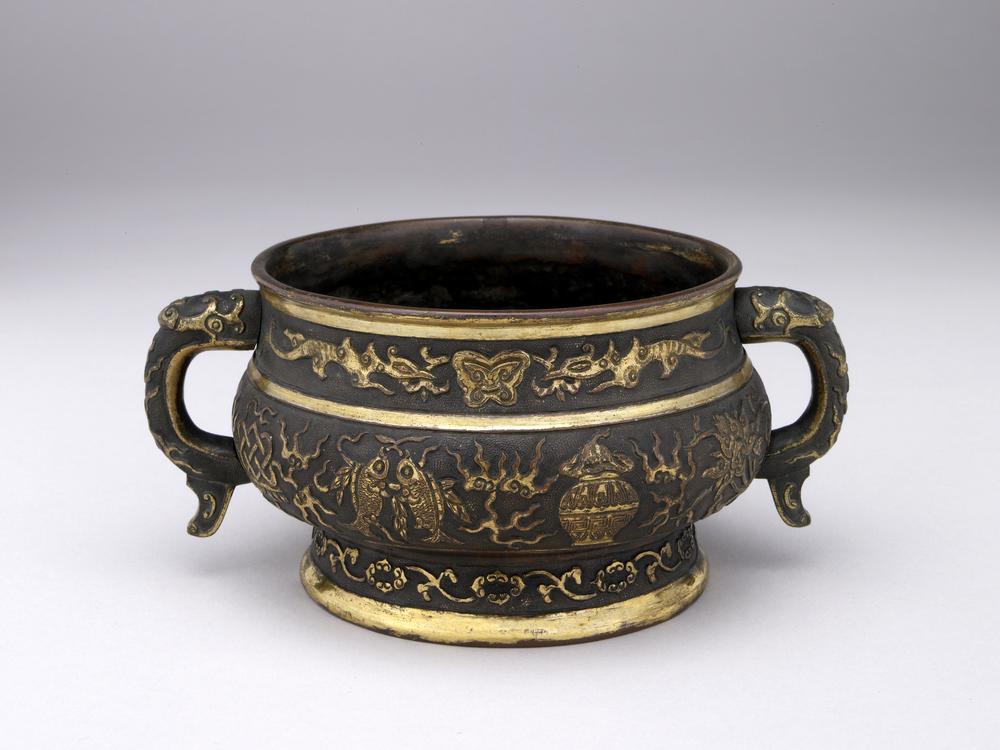Period:Unknown Production date:1810
Materials:paper
Technique:painted
Subjects:landscape
Dimensions:Height: 43 centimetres Width: 1607.90 centimetres
Description:
Painting, handscroll. Chinese landscapes with mountains, craggy rocks, trees, expanses of water, and figures; copy of ‘Landscape of Four Seasons’ handscroll, originally by Sesshu and later copied by Kano Eisen’in Hisanobu (Furunobu). Ink and light colour on paper. Signed, sealed and inscribed.
IMG
![图片[1]-painting; handscroll BM-1881-1210-0.1226-China Archive](https://chinaarchive.net/Unknown/Paintings/mid_00032187_001.jpg)
![图片[2]-painting; handscroll BM-1881-1210-0.1226-China Archive](https://chinaarchive.net/Unknown/Paintings/mid_00538039_001.jpg)
Comments:Hizo Nihon bijutsu taikan Vol 2The original of this work is Sesshu Toyo’s celebrated ‘Landscape of the Four Seasons’, more commonly known as the “Long Landscape Scroll” or the “Mori Scroll” (Mori Art Museum), which has an inscription stating that it was painted by Sesshu in 1486 at the age of sixty-seven. A postscript to the present scroll informs us that it is a direct copy made by Kano Osanobu in 1810 of an earlier copy of the “Long Landscape Scroll” made by Eisen Hisanobu (1696-1731), the fourth head of the Kobikicho Kano family. Osanobu was only fifteen at the time.Kano Osanobu (1796-1846) was the son of Isen’in Naganobu (1775-1828); he became head of the family following his father’s death in the tenth month of 1828, first taking the name of Gyokusen, then later that of Seisen’in. Under the guidance and influence of his father, he came to attach great importance to the study of the classics, and in the course of his lifetime he produced an enormous quantity of copies, not only of Muromachi-period Chinese-style works of the Kano school, but also of the Chinese works from which they derived; he also copied painting-scrolls in the traditional ‘yamato-e’ style and even works such as ‘Deer and Cranes’, a screen in the Itabashi Ward Art Museum, Tokyo, by the then-fashionable Shen Nanpin.Copying is without doubt a very effective way of improving one’s own brush techniques. Nevertheless, if it does no more than preserve a school’s style, it lays itself open to criticisms of mindless imitation; the important thing is to devise means of incorporating the superior techniques thus acquired into a style of one’s own. Osanobu was well aware of the dangers here, and as leader of his school was sufficiently talented artistically to avoid them. It is hardly a coincidence that Hashimoto Gaho and Kano Hogai, two pioneers of the modernization of the Nihonga, should have been among the disciples of the same Kobikicho Kano school. ‘The original is in the collection of Duke Mōri.’ (unattributed annotation in the specially interleaved Japanese Study Room copy of Anderson 1886)
Materials:paper
Technique:painted
Subjects:landscape
Dimensions:Height: 43 centimetres Width: 1607.90 centimetres
Description:
Painting, handscroll. Chinese landscapes with mountains, craggy rocks, trees, expanses of water, and figures; copy of ‘Landscape of Four Seasons’ handscroll, originally by Sesshu and later copied by Kano Eisen’in Hisanobu (Furunobu). Ink and light colour on paper. Signed, sealed and inscribed.
IMG
![图片[1]-painting; handscroll BM-1881-1210-0.1226-China Archive](https://chinaarchive.net/Unknown/Paintings/mid_00032187_001.jpg)
![图片[2]-painting; handscroll BM-1881-1210-0.1226-China Archive](https://chinaarchive.net/Unknown/Paintings/mid_00538039_001.jpg)
Comments:Hizo Nihon bijutsu taikan Vol 2The original of this work is Sesshu Toyo’s celebrated ‘Landscape of the Four Seasons’, more commonly known as the “Long Landscape Scroll” or the “Mori Scroll” (Mori Art Museum), which has an inscription stating that it was painted by Sesshu in 1486 at the age of sixty-seven. A postscript to the present scroll informs us that it is a direct copy made by Kano Osanobu in 1810 of an earlier copy of the “Long Landscape Scroll” made by Eisen Hisanobu (1696-1731), the fourth head of the Kobikicho Kano family. Osanobu was only fifteen at the time.Kano Osanobu (1796-1846) was the son of Isen’in Naganobu (1775-1828); he became head of the family following his father’s death in the tenth month of 1828, first taking the name of Gyokusen, then later that of Seisen’in. Under the guidance and influence of his father, he came to attach great importance to the study of the classics, and in the course of his lifetime he produced an enormous quantity of copies, not only of Muromachi-period Chinese-style works of the Kano school, but also of the Chinese works from which they derived; he also copied painting-scrolls in the traditional ‘yamato-e’ style and even works such as ‘Deer and Cranes’, a screen in the Itabashi Ward Art Museum, Tokyo, by the then-fashionable Shen Nanpin.Copying is without doubt a very effective way of improving one’s own brush techniques. Nevertheless, if it does no more than preserve a school’s style, it lays itself open to criticisms of mindless imitation; the important thing is to devise means of incorporating the superior techniques thus acquired into a style of one’s own. Osanobu was well aware of the dangers here, and as leader of his school was sufficiently talented artistically to avoid them. It is hardly a coincidence that Hashimoto Gaho and Kano Hogai, two pioneers of the modernization of the Nihonga, should have been among the disciples of the same Kobikicho Kano school. ‘The original is in the collection of Duke Mōri.’ (unattributed annotation in the specially interleaved Japanese Study Room copy of Anderson 1886)
© Copyright
The copyright of the article belongs to the author, please keep the original link for reprinting.
THE END
![[Qing Dynasty] British female painter—Elizabeth Keith, using woodblock prints to record China from the late Qing Dynasty to the early Republic of China—1915-China Archive](https://chinaarchive.net/wp-content/uploads/2022/11/image-191x300.png)




